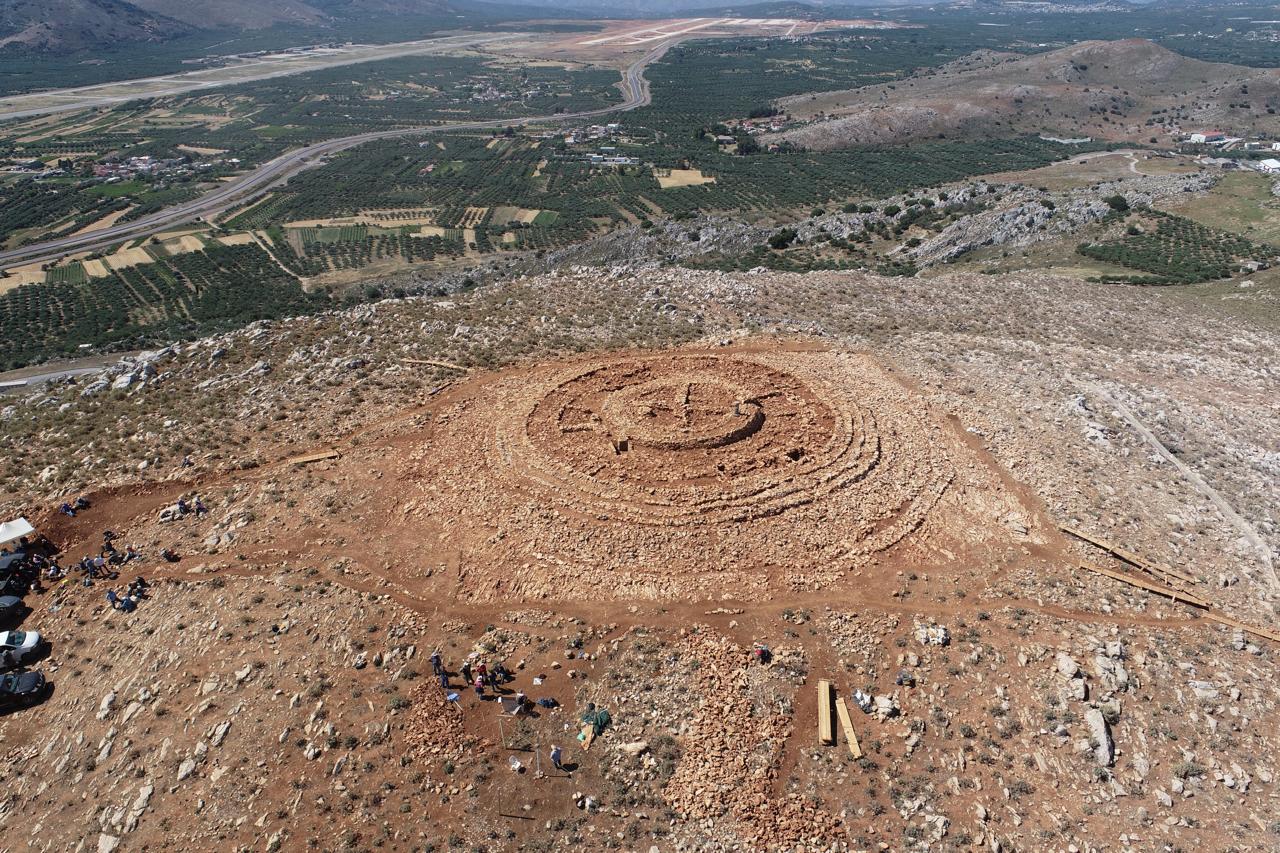
Workers installing a radar system ahead of an airport construction project in the town of Kastelli in Crete stumbled on a large architectural monument, one unique for Minoan archaeology.
Located at the highest point of Papoura Hill, at an altitude of 1,620 feet, the complex dates to between 2000–1700 B.C.E., at the onset of Minoan civilization. It comprises eight thick, concentric stone rings, with a circular building at its center. Measuring 15 meters in diameter, this central edifice is divided into four quadrants, its radial walls intersecting vertically. Ongoing excavation has found the entire structure, which covers about 1,800 square meters, boasts a labyrinthine design, with various spaces accessible through narrow openings.
The monument is the first of its kind to be found in Crete. Researchers are still working to discover its original form and purpose, though they have noted similarities between this circular complex and the architectural ensembles of the early Bronze Age in the Middle East, as well as the tombs of the Pre-Palatial and Paleo-Palatial eras of southern Crete.
This period coincides with the island’s early Bronze Age history, or the Early to Middle Minoan ages. Named after the mythological king Minos, Minoan society, believed to be Europe’s earliest civilization, was known for its advances in trade, seafaring, and the arts. Surviving Minoan relics bear traces of the culture’s lavish palaces, intricate pottery and jewelry, and elaborate multi-use tombs.
The monumental structure found in Kastelli in Crete. Photo: Greek Ministry of Culture.
So far, archaeologists have deduced that the complex was a type of community building, likely with a ceremonial or religious function, its size and location indicating that it served a vast population. While it appears to have been used largely during the Pre-Palatial period, as indicated by traces of human activity in the central structure, Neo-Palatial pottery discovered in the destruction layer suggests it remained in use close to the Late Minoan period.
In a statement, the Greek Culture Ministry stated that a new location for the forthcoming airport’s radar station will be sourced in order that archaeologists can continue to study and preserve the structure.
“This is a unique find of great interest,” said Culture Minister Lina Mendoni. “The priority is the protection of the monument. We all understand the importance and value of cultural heritage. The construction of the new airport will proceed and the antiquities will be protected as they should be.”
According to the ministry, construction work on Heraklion Airport in Kastelli has seen the discovery of no less than 35 archaeological sites.